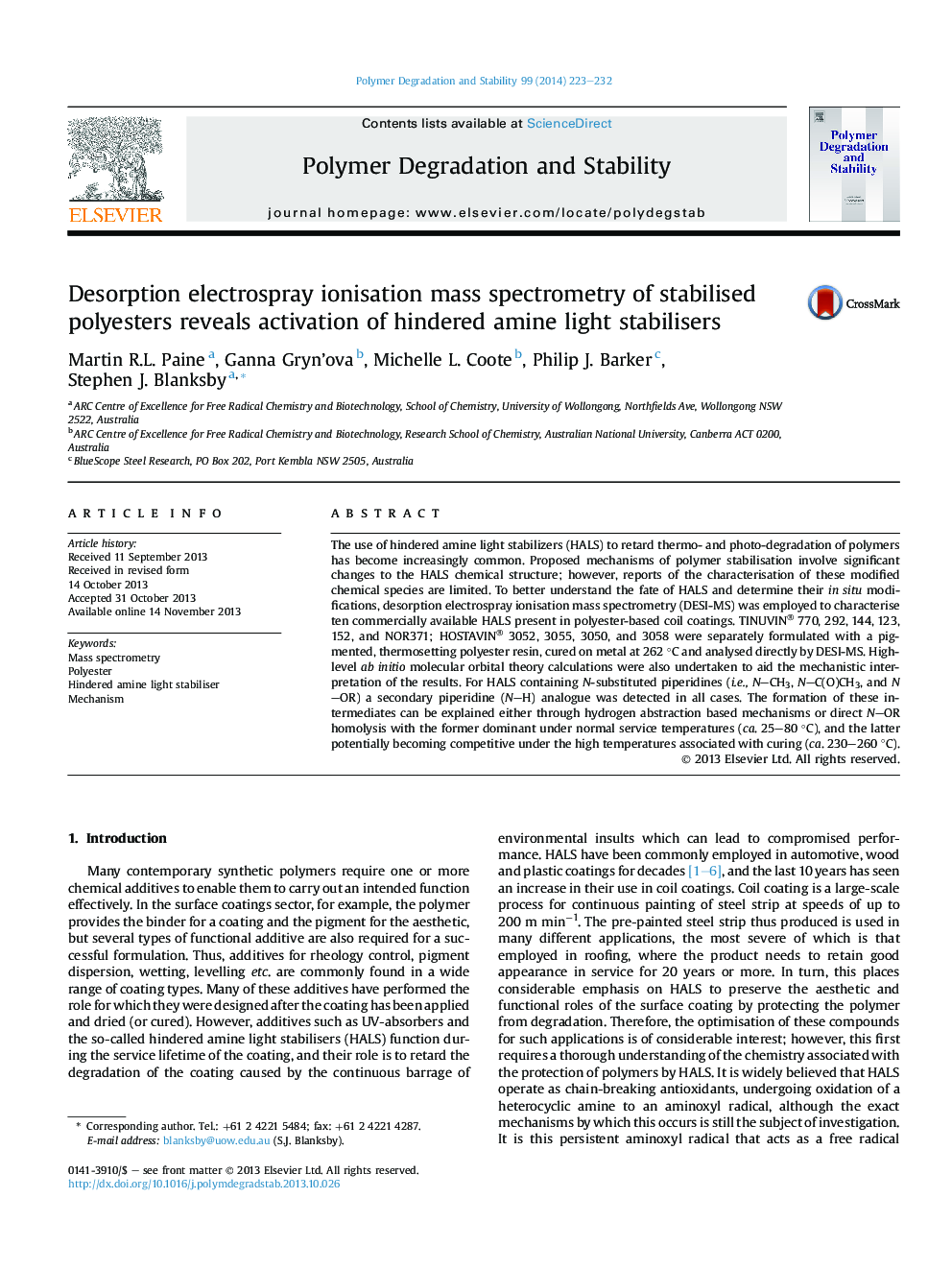| Article ID | Journal | Published Year | Pages | File Type |
|---|---|---|---|---|
| 5202108 | Polymer Degradation and Stability | 2014 | 10 Pages |
Abstract
The use of hindered amine light stabilizers (HALS) to retard thermo- and photo-degradation of polymers has become increasingly common. Proposed mechanisms of polymer stabilisation involve significant changes to the HALS chemical structure; however, reports of the characterisation of these modified chemical species are limited. To better understand the fate of HALS and determine their in situ modifications, desorption electrospray ionisation mass spectrometry (DESI-MS) was employed to characterise ten commercially available HALS present in polyester-based coil coatings. TINUVIN® 770, 292, 144, 123, 152, and NOR371; HOSTAVIN® 3052, 3055, 3050, and 3058 were separately formulated with a pigmented, thermosetting polyester resin, cured on metal at 262 °C and analysed directly by DESI-MS. High-level ab initio molecular orbital theory calculations were also undertaken to aid the mechanistic interpretation of the results. For HALS containing N-substituted piperidines (i.e., N-CH3, N-C(O)CH3, and N-OR) a secondary piperidine (N-H) analogue was detected in all cases. The formation of these intermediates can be explained either through hydrogen abstraction based mechanisms or direct N-OR homolysis with the former dominant under normal service temperatures (ca. 25-80 °C), and the latter potentially becoming competitive under the high temperatures associated with curing (ca. 230-260 °C).
Keywords
Related Topics
Physical Sciences and Engineering
Chemistry
Organic Chemistry
Authors
Martin R.L. Paine, Ganna Gryn'ova, Michelle L. Coote, Philip J. Barker, Stephen J. Blanksby,
